College Students Are Annotating Their Campus Monuments With Notes on Slavery
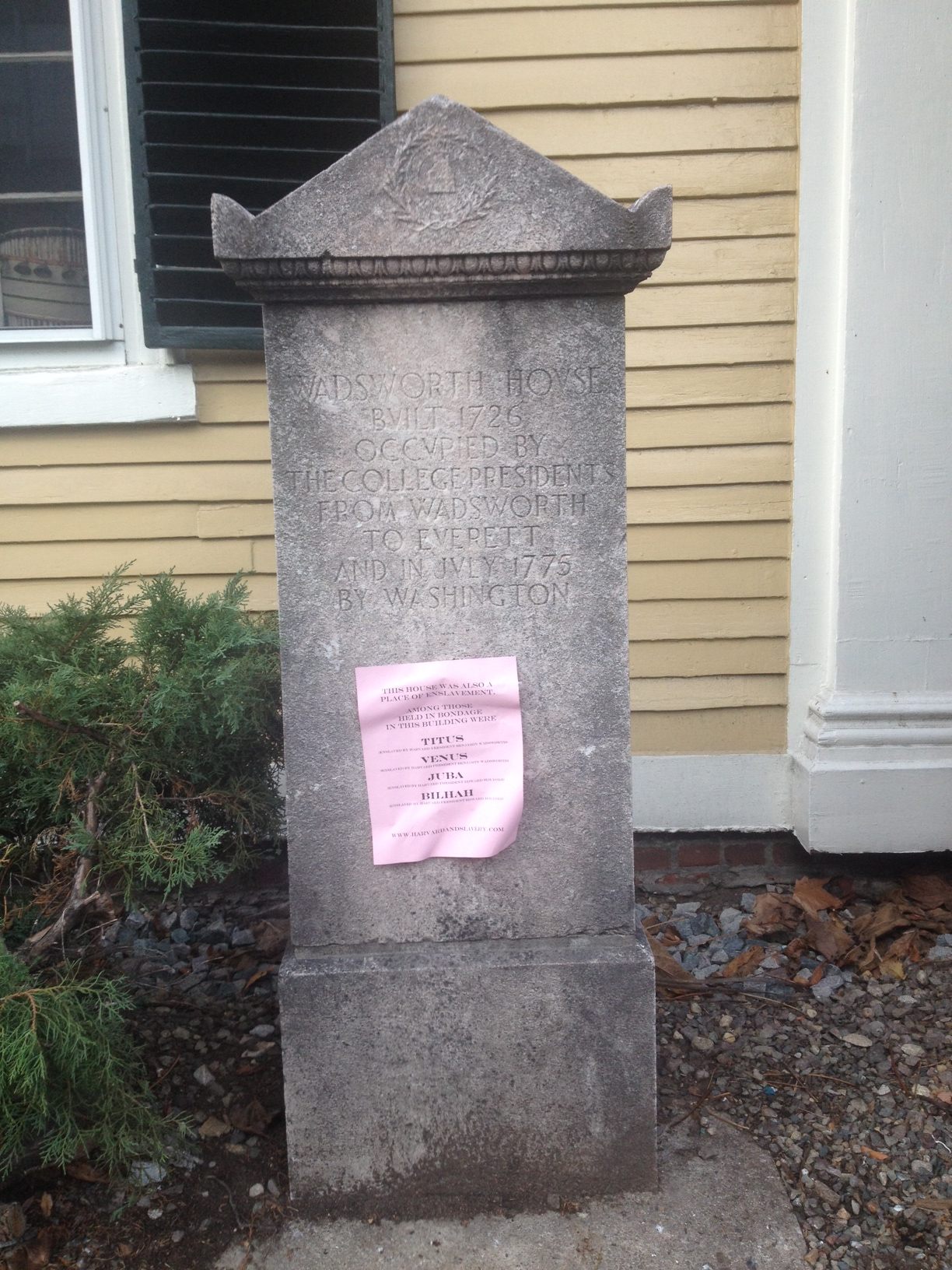
An annotated monument outside Harvard University’s Wadsworth House. (Photo: Atlas Obscura)
Take a quick stroll around Harvard University and its surrounds and you’ll encounter many a memorial to a storied personage. There’s the John Harvard statue on the steps of University Hall; a figure of fellow Harvard alumnus Charles Sumner gazing out over the Yard; George Washington memorialized with a plaque on Cambridge Common. But last week, four lesser-known figures from the past quietly appeared in the historic neighborhood.
On a monument in front of the university’s Wadsworth House, beneath the carved names of the college presidents who once lived there, someone has taped up a bright pink piece of paper. “This house was also a place of enslavement,” it reads. “Among those held in bondage in this building were: Titus, Venus, Juba, Bilhah.”
Titus, Venus, Juba and Bilhah were enslaved people in colonial Cambridge. Titus and Venus were owned by Harvard president Benjamin Wadsworth, and Juba and Bilhah by his successor Edward Holyoke.
This invocation of forgotten names, by a thus-far anonymous annotator, was likely inspired by current conversations about the intersection of Harvard’s past and present. Recently, the university retired the title of “house master,” formerly given to faculty members in certain leadership roles, due to the phrase’s connection with images of slavery. There is ongoing debate about the Harvard Law School seal, which takes its sheafs-of-wheat imagery from the crest of a slaveholding family.
But our knowledge of Titus, Venus, Juba, and Bilhah—their names, the few details of their lives, the fact that they existed at all—is largely thanks to an older source: the Harvard and Slavery Project.
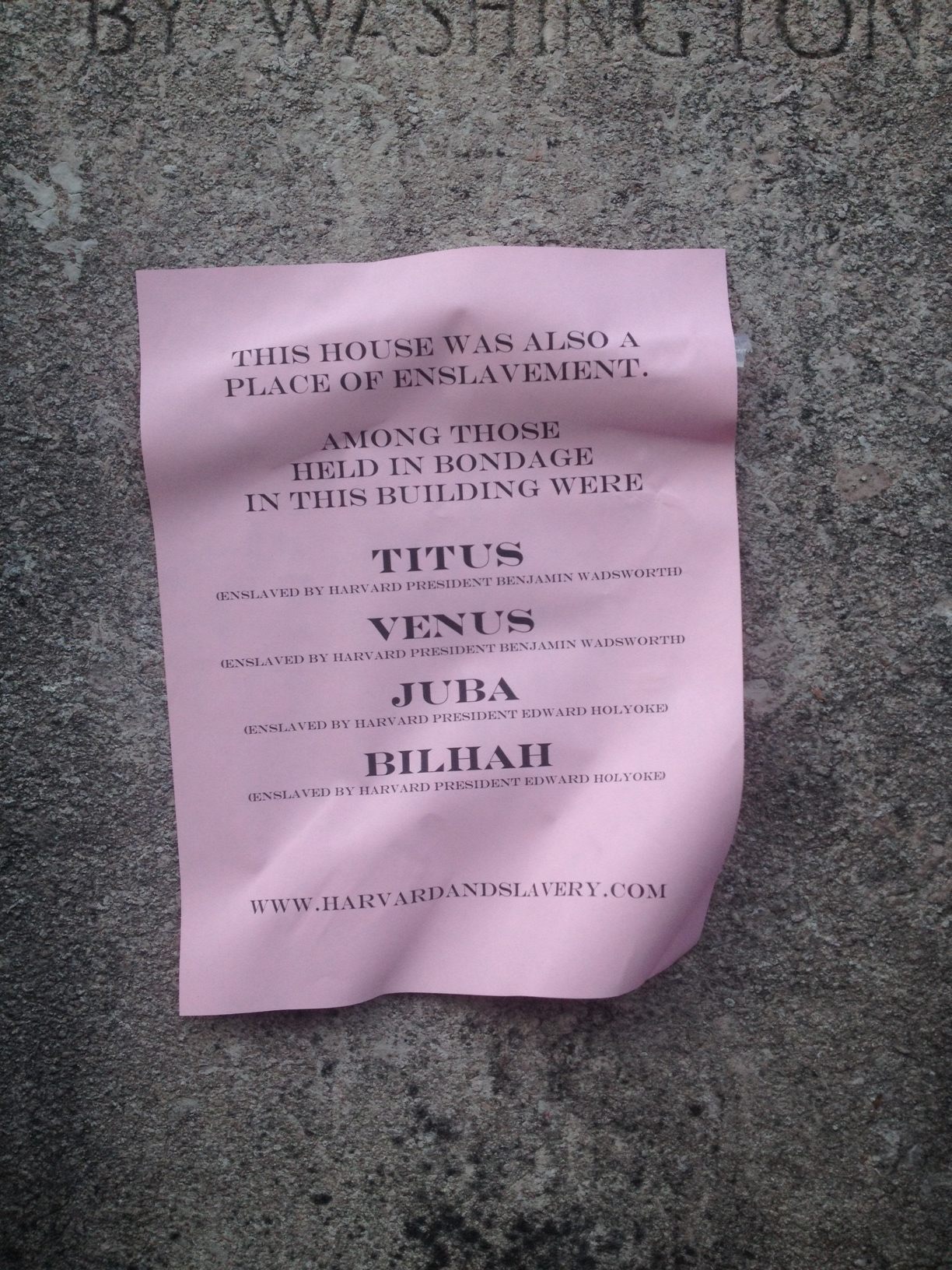
Detail of the annotation. (Photo: Atlas Obscura)
The Harvard and Slavery Project began in 2007 as an undergraduate and extension school course called “Harvard and Slavery Research Seminar,” which was taught by history professor Sven Beckert and then-Ph.D. student Katherine Stevens. At that time, Harvard’s relationship with slavery was unclear. “People knew little bits here and there, but no one had ever put time into researching it fully,” says Stevens, who is now a professor at Oglethorpe University. At first, she and Beckert feared they wouldn’t even find enough material to fill class time.
But as soon as they and their students started the work, scouring archives, manuscripts, graveyards, and local buildings for clues, a fuller picture began to emerge. “Even from the earliest moment, there were enslaved people at the university,” says Stevens—owned by presidents and professors, traded by alums, bought by the college steward to cook and clean for students. Big donors made their fortunes (like many wealthy people of the time) from slave-exploiting plantations, and used that money to endow whole schools. When, in 1755, an enslaved woman named Phillis was burned at the stake in Cambridge for conspiring to kill her owner, three out of the four presiding justices were from Harvard, as was the prosecuting attorney.
These entanglements are by no means unique to Harvard. But where other universities—Brown, for example—have dedicated whole presidential commissions to grappling with their legacies, Harvard hasn’t pursued such official action. “In general, I think slavery at Harvard is not a well-known or a well-publicized thing,” says Caitlin G.D. Hopkins, a Harvard lecturer and monument expert who helped with the project. “I think that the university is walking this fine line of trying to be responsive to scholarship and those sorts of things, but also being beholden to alumni and more conservative forces.”
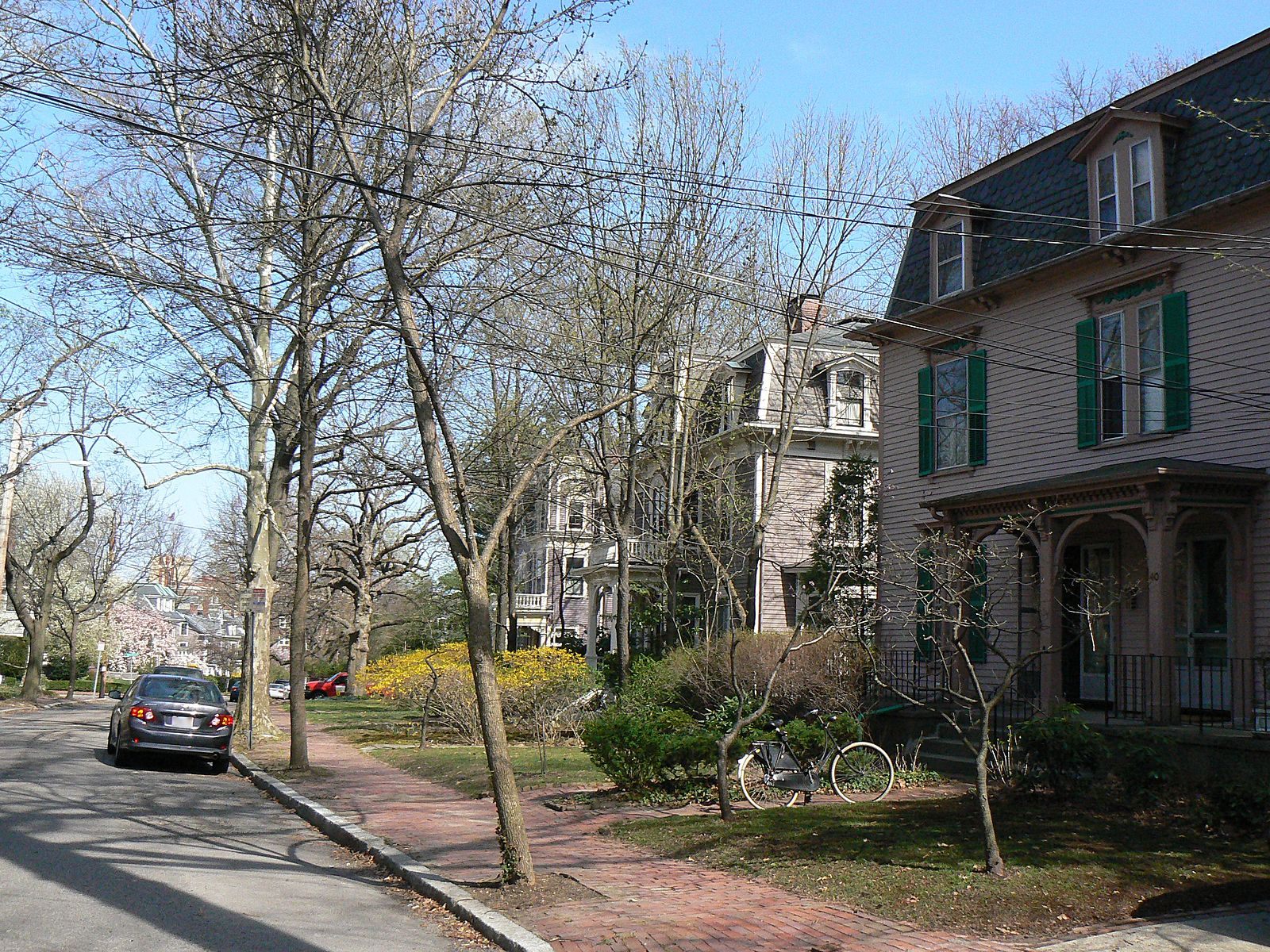
Cambridge’s Avon Hill neighborhood, near to where two slaves were burned at the stake in 1755. (Photo: MagicPiano/WikiCommons CC BY-SA 4.0)
The surrounding environs haven’t helped. With some notable exceptions, close-to-home slavery-related events in New England don’t get the same kind of attention as local victories or overseas atrocities—at least, not yet. “Massachusetts and Cambridge like to think of themselves as having an abolitionist legacy,” even though enslaved people lived here for centuries, Hopkins says. Despite recent attempts to bring more nuance to this self-definition, she says, “slavery in the North … is still something that’s not at the forefront of everyone’s minds.”
To make the issue more prominent, the History and Slavery Project has built multiple resources. There are videos, in which students describe a speech or an event while standing in the spot where it happened. There is a very comprehensive booklet, compiled by Beckert and Stevens from seminar research and available for free online. A Harvard and Slavery walking tour, self-guided using the map from the project’s website, brings you from households of slave-owning families to sites of major plantation-based commerce to the Old Burying Ground. There, the headstones of two enslaved people—Jane, one of the steward’s slaves, and Cicily, who belonged to the minister—are clearly visible from the entryway.
Another stop is the aforementioned Wadsworth House, where three different Harvard presidents kept slaves. But while the walking tour requires a certain amount of existing knowledge and interest—app open, headphones in—the new, pink paper addition to the Wadsworth monument grabs passers-by, tourists, and others who might not think to Google it themselves. “What the poster on that monument does is, it makes you imagine that university space with enslaved people in it,” says Stevens. Even the minimal presentation is more benefit than liability: “We don’t have pictures of [the slaves], we don’t have their writing, we don’t have their testimonials,” she says. “When we see their names, we have to imagine more, and I think that makes us participate more in thinking about the history.”
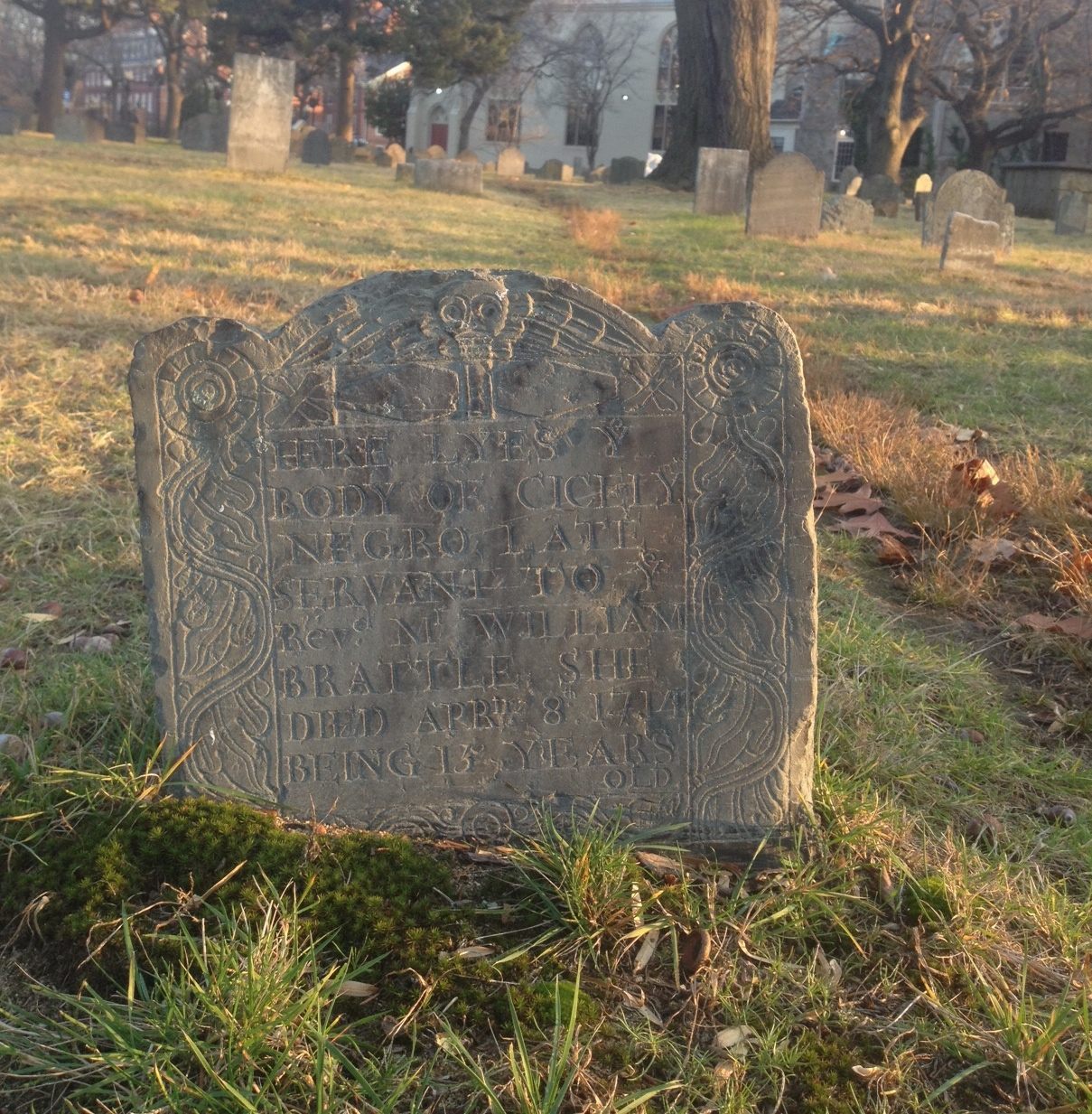
The gravestone of Cicily, “servant to Reverend M. William Brattle,” in the Old Burying Ground in Cambridge. (Photo: Atlas Obscura)
As debates about the institutional role of history divide campuses nationwide, annotating monuments has become one way for students to comment on their schools’ commemorative choices without erasing them. Students at both the University of Missouri and William & Mary in Virginia have covered statues of Thomas Jefferson with sticky notes that detail some of his less heroic attributes. After student protests, authorities at the University of Texas at Austin may put plaques near campus statues of Confederate war heroes “to provide context.”
While national media pays careful attention to what’s going on inside Harvard Yard, just outside, students, tour groups and holiday shoppers pause to inspect the pink splash interrupting the ordinary slate-colored monument experience. One young woman, while reading it, misses her bus. “It’s not a story everyone at Harvard is rushing to tell,” says Hopkins. But when it gets told, people stop to listen.


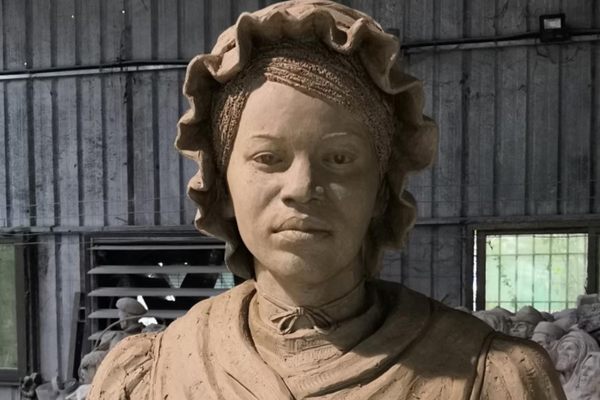
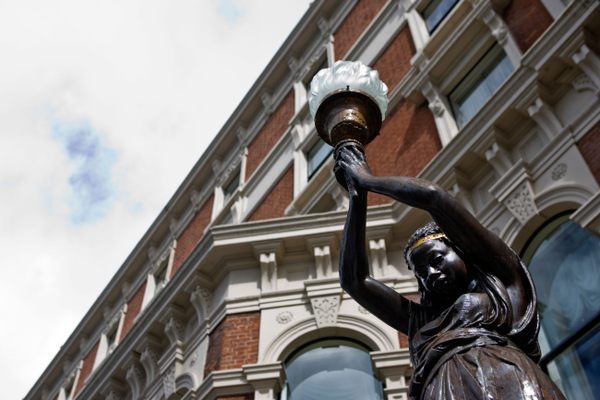






Follow us on Twitter to get the latest on the world's hidden wonders.
Like us on Facebook to get the latest on the world's hidden wonders.
Follow us on Twitter Like us on Facebook